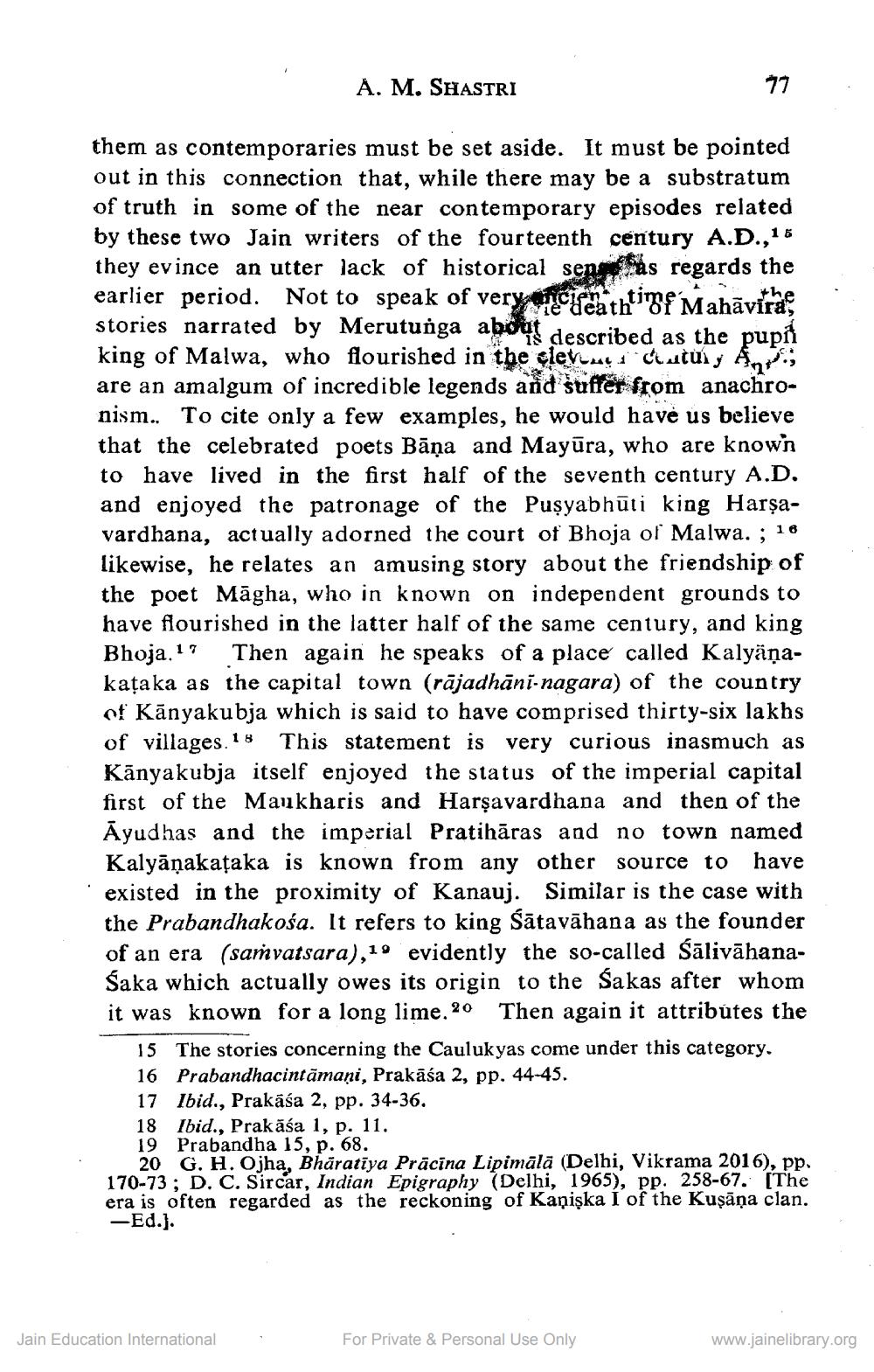________________
A. M. SHASTRI
16
them as contemporaries must be set aside. It must be pointed out in this connection that, while there may be a substratum of truth in some of the near contemporary episodes related by these two Jain writers of the fourteenth century A.D.,15 they evince an utter lack of historical sens as regards the earlier period. Not to speak of very cift Heath Of Mahavira time stories narrated by Merutunga about described as the pupi king of Malwa, who flourished in the elevatury A are an amalgum of incredible legends and suffer from anachronism.. To cite only a few examples, he would have us believe that the celebrated poets Bāņa and Mayūra, who are known to have lived in the first half of the seventh century A.D. and enjoyed the patronage of the Pusyabhūti king Harṣavardhana, actually adorned the court of Bhoja of Malwa. ; likewise, he relates an amusing story about the friendship of the poet Magha, who in known on independent grounds to have flourished in the latter half of the same century, and king Bhoja. 17 Then again he speaks of a place called Kalyāṇakaṭaka as the capital town (rājadhānī-nagara) of the country of Kanyakubja which is said to have comprised thirty-six lakhs of villages.18 This statement is very curious inasmuch as Kanyakubja itself enjoyed the status of the imperial capital first of the Maukharis and Harṣavardhana and then of the Ayudhas and the imperial Pratihāras and no town named Kalyāṇakaṭaka is known from any other source to have existed in the proximity of Kanauj. Similar is the case with the Prabandhakosa. It refers to king Śātavāhana as the founder of an era (samvatsara),19 evidently the so-called SalivahanaŚaka which actually owes its origin to the Sakas after whom it was known for a long lime. 20 Then again it attributes the
77
15 The stories concerning the Caulukyas come under this category. 16 Prabandhacintāmaṇi, Prakāśa 2, pp. 44-45.
17 Ibid., Prakasa 2, pp. 34-36.
18 Ibid., Prakāśa 1, p. 11.
19
Prabandha 15, p. 68.
Jain Education International
20 G. H. Ojha, Bharatiya Präcīna Lipimālā (Delhi, Vikrama 2016), pp. 170-73; D. C. Sircar, Indian Epigraphy (Delhi, 1965), pp. 258-67. [The era is often regarded as the reckoning of Kanişka I of the Kuṣāņa clan. -Ed.].
For Private & Personal Use Only
www.jainelibrary.org




